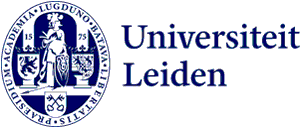
PhD candidate Diego Salama: ‘UN peacekeeping operations have become increasingly important in Israel-Palestine conflict’
From 1967 to 1982, the United Nations undertook several peacekeeping operations in the Middle East. In his thesis from the Institute for History, Diego Salama examines how these operations were connected and their impact on the region.
‘These operations, an innovative response to international conflicts, were not originally detailed in the UN Charter,’ says Salama speaking from New York, where he is for his job at the United Nations University. ‘They evolved as a practical mechanism to prevent wars.’ As a result, the operations were also long seen as separate actions, launched ad hoc when needed. ‘I wanted to show that these operations were connected and that they consequently formed a peacebuilding architecture that influenced the diplomatic and security landscape of the region.’
Ensio Siilasvuo
Central to this is Finnish General Ensio Siilasvuo, who served as Chief Coordinator in charge of peacekeeping in the Middle East. 'His accomplishments stand out as both astonishing and seriously underappreciated,’ Salama states. ‘He blended diplomatic acumen with security operations, setting up a cohesive operational framework, responding to emergent crises with a firm hand, while at the same time laying the groundwork for subsequent peacekeeping endeavours. Rediscovering Siilasvuo's narrative was among the most enlightening and significant revelations of my PhD journey, underscoring the vital, albeit often unnoticed, contributions of individuals in shaping the course of international peace and security.’
Despite the Cold War, cooperation between the various parties involved increased under Siilasvuo. ‘While not always explicitly mandated, the Arab-Israeli conflict was essentially treated as a singular problem requiring a unified response,’ Salama explains. ‘What emerged was a sophisticated architecture of collaboration that encompassed financial management, asset redeployment, troop movements, and even diplomatic engagements.’ Yet a solution in the region now seems further away than ever.
Twin-track policy
‘Drawing on my research findings, I would say that the path to improving the current situation in Israel/Gaza is complex and needs a finely tuned approach,’ Salama says. ‘Proper attention has to be paid to the intricate web of geopolitical dynamics, historical grievances, and the urgent humanitarian crisis at hand. It's crucial to understand that the UN operates within a state-centric international system. This reality underscores that an end to the conflict can only emerge from an agreed framework that offers both Israel and Gaza the security and peace assurances necessary for coexistence. This is the bedrock upon which any lasting peace needs to be built.’
Salama proposes a twin-track policy aimed at both peacekeeping and promoting prosperity and reconstruction. ‘The UN's Security Council needs to expand the mandate, resources, and personnel of the UN Truce Supervision Organization (UNTSO), which is the oldest peace operation in the field. With its seventy-year mandate and a widespread network of UN observers in the region, UNTSO is uniquely positioned to oversee ceasefire agreements, facilitate communication between the warring parties, and serve as the nucleus for international peacekeeping initiatives along the Israel-Gaza border.’
At the same time, Gaza should be given all the help it needs to halt the current crisis and start reconstruction: ‘This conflict, at the crossroads of crisis and transformation, demands a response that is as rapid and effective in meeting the dire humanitarian needs as it is insightful and forward-looking in anticipating and adapting to the changing geopolitical landscape. Only by tackling both aspects can we hope to move towards a sustainable peace in the region.’
The views and opinions expressed in this interview are solely those of the individual and do not necessarily reflect the official policy or position of any organisations with which the author is associated or affiliated.
